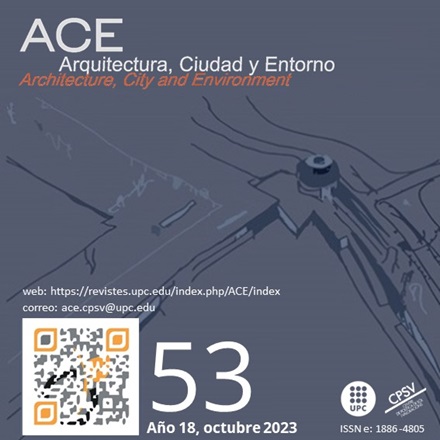Redefining the Climate Zones of Spain: A New Climate Classification for Building Energy Efficiency
DOI:
https://doi.org/10.5821/ace.18.53.12087Abstract
This study tackles the inherent limitations of the Technical Building Code (CTE), by developing a new climate classification methodology to modify and enhance the CTE. We have collected climate data over a 30-year period (1991-2020) and, based on different climatic influences, have divided the climate data into two dimensions: the humidity zone and the thermal zone, which are primarily determined by precipitation patterns and temperature patterns, respectively. In addition, we have also taken into account geographical factors such as proximity to the sea and altitude. By using k-means cluster analysis and the elbow rule, we have identified the optimal configuration of clusters for both zones, dividing Spain into 5 humidity zones and 7 thermal zones. Ultimately, we have obtained a new climatic classification of Spain, divided into 26 zones. This enhancement not only addresses the shortcomings of the CTE but also greatly enriches our understanding of Spain's climate diversity. Indeed, this new classification will provide a more precise guide for building design and the optimization of energy efficiency.
Downloads
Published
Issue
Section
License
| INTELECTUAL PROTECTION CRITERIA |
At this moment, it is count with the "Oficina Española de Patentes y Marcas", while global protection it is being processed by the World Intelectual Property Organization (OMPI/WIPO). Nevertheless the International Standard Serial Number Office (ISSN) has given the following numbers ISSN: 1886-4805 (electronic version) and 1887-7052 (paper version). All articles will be peer reviewed, using double blind reviewing. |
| COPYRIGHT |
The article contents and their comments are authors exclusive liability, and do not reflect necessarily the journal editor commitee's opinion. All ACE published works are subject to the following licence CC BY-NC-ND 3.0 ES http://creativecommons.org/licenses/by-nc-nd/3.0/es/ It implies that authors do not hold nor retain the copyright without restrictions but only those included in the licence. |





































